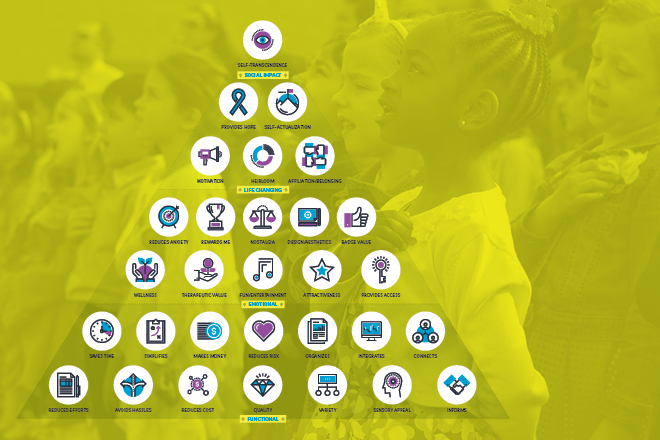Article by Spencer Taintor, Brookfield Academy
Independent schools are constantly struggling to define and articulate the core values that attract students and families to their campus. Is it the rigorous academics and excellent college placement? The outstanding STEM curriculum, robust arts program, competitive athletics? The beautiful and safe learning environment? The commitment to progressive education and socioeconomic diversity? From a psychological perspective, it has never been more complicated to discern what parents want in their child’s education. For generations, parents’ values were based largely on their own ideals. Parents today span a wider age range, from Baby Boomers to GenXers and Millennials. How can schools target those wants when parents themselves have so many perspectives?
In its 54-year history, Brookfield Academy has always been synonymous with strong academics in the greater Milwaukee market. Standardized test scores are far above national norms, and graduating seniors routinely go on to attend top colleges and universities. There’s an old line around here that it’s not Brookfield Academy; it’s Brookfield University. The problem — at least in recent years — is that BA’s excellent academic reputation has overshadowed its more experiential benefits that younger parents in particular value so highly. Moreover, we’re in an excellent public school district, and the local charter system is improving. Strong academics are no longer the value proposition that reliably seals the deal with younger families.
Strong academics are no longer the value proposition that reliably seals the deal with younger families.
When BA’s board hired me as head of school in 2015, they were looking for a leader who could build on the successes of the previous head (who was there for 25 years) while also continuing to advance the school, including its use of technology and its market perception. After taking time to listen to our community, it seemed obvious to me that we needed to tell a more comprehensive story of BA, one that connected our mission to our market at a much deeper level. The school is doing well — among other things, tuition has always covered 100 percent of operational costs — but it faces a changing market as generational preferences shift.
A little over a year after I started at BA, I read an article in Harvard Business Review that helped put the school on its current road to a marketing overhaul. In “The Elements of Value,” researchers Eric Almquist, John Senior and Nicolas Bloch examined decades of consumer research to learn how consumers weigh the perceived value of a product or service against its price. They identified 30 fundamental attributes that all consumers value — “universal building blocks” that create opportunities for organizations to improve performance or even justify costs. As with Abraham Maslow’s hierarchy of needs, published in 1943, the researchers found that consumers seek first to fulfill their most basic needs, and then move up the hierarchy to more complex needs. The resulting “elements of value” pyramid organizes these attributes into four fundamental categories: functional, emotional, life-changing and social impact, as shown in the visual on the opposite page.
The researchers found that many successful businesses that have a high perceived value display multiple elements within the hierarchy. Moreover, and more importantly, they found that organizations with “the right combinations” of value experience stronger customer loyalty and sustained revenue growth.
I began to wonder: Is there an educational corollary?
The Hierarchy of Educational Needs
Even in education, basic economics says that consumers weigh cost to value. We see this when families move from one independent school to another, or from a private school to a public school (or vice versa) after comparing what they pay against the school’s delivery of what they value. Using the model in Almquist et al's elements of value, I believe educators can develop a similar hierarchy of parents’ needs and wants for their children’s education. Such a structure acknowledges that different parents have varying needs, but it also creates a framework of common attributes that all parents inherently value.
Consider the functional level. Parents across multiple generations would describe these as “the givens” in a school — basic attributes that educating a child requires, such as providing a safe place and delivering learning opportunities. From these fundamental needs, parents move toward the emotional realm, asking if the school will build confidence and inspire learning. As those needs are satisfied, parents will look for attributes in the “life-changing” and “social impact” categories.
The chart below shows how I “translated” the elements of value identified by Almquist, Senior and Bloch to the parental value evaluation. Schools that achieve more of these values have greater success not only in student achievement but also in parental support. Consider the lengths to which parents go to get their children into schools that score high in these values, such as Thomas Jefferson High School for Science and Technology (a public magnet school in Virginia) and Philips Exeter Academy in New Hampshire. Besides excelling in the functional and emotional elements, these schools stand out in the higher categories. Although each is vastly different from the other, they both seem to have many of the elements that, combined, demonstrate a higher value to parents: opportunities for students to reach their greatest potential and make an impact as global citizens.
This research is highly relevant to Brookfield Academy. Working with a marketing company, we are using the values framework and these questions to dive deep into why families choose us, and to rebrand accordingly. I feel that other schools can do the same, for instance in surveying parents and directing priorities. Instead of striving to be everything to everyone, schools should focus on delivering the attributes that parents — Baby Boomers, GenXers and Millennials alike — seek for their children.
Spencer Taintor, Ph.D., is head of school at Brookfield Academy, a day school with 876 students in prekindergarten through 12th grade, in Brookfield, Wisconsin. He joined the school in 2015.
Download a PDF of the article.





